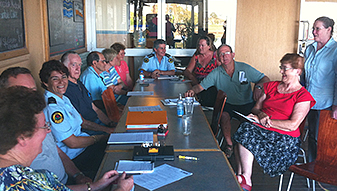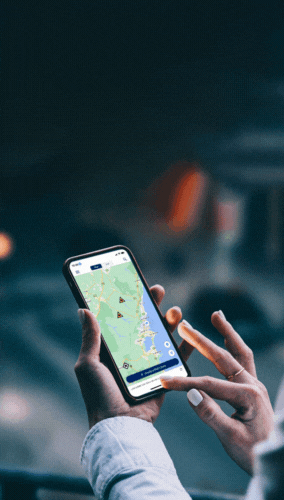
Tim Miller
59
Port Stephens Unit
'In my time as a member of the NSW SES, I’ve had the privilege to meet some of the most exceptional people with big hearts that have become an extended family - I wouldn’t change a thing that I have done in the last 38 years.'
Tell us a bit about you and your life outside the NSW SES?
I am a proud Wanaruah man (covers Hunter Valley down to the western side of Raymond terrace) and am a board member of the New South Wales Local Aboriginal Land Council in Muswellbrook.
Last year, the Wanaruah Local Aboriginal Land Council facilitated the repatriation of 9 sets of Aboriginal remains that had been in museums in Sydney and Scotland. I was humbled to have been the MC for the ceremony where these Aboriginal remains were reburied, returning to the land once again.
I am married with four sons. I met my wife, Melanie, while she was working at the lower hunter division State Emergency Service HQ at Metford.
For the past 30 years I’ve owned and operated my own business, Hunter Valley Paintball.
Why did you join the NSW SES?
I was working at the OAK milk factory at Hexham where I met a member of the Maitland SES who told me about SES activities in floods, storms and assisting the Police with searches. From then on, I was hooked. Over the next few years I gained experience in Floodboat Operations, Storm and Tempest, Chainsaw, General Rescue, and became an instructor holding the position of Rescue Officer for the Maitland Unit. In 1998, I moved to the Port Stephens SES Unit where I became a Road Crash Rescue Instructor.
When did you join the NSW SES?
I was 17 when I joined the NSW SES Maitland Unit in October 1982.
What motivates you as a NSW SES member?
During my time at the Maitland Unit and in the Port Stephens Unit, I made a lot of friends who became a second family to me - with every training activity or active job, the family bonded. In my time as a member of the NSW SES, I’ve had the privilege to meet some of the most exceptional people with big hearts that have become an extended family - I wouldn’t change a thing that I have done in the last 38 years.
What’s your most memorable experience in your time as a NSW SES member?
There are many memorable moments. Just a few include:
The Lower Hunter used to hold a Flood Boat competition called the Fred Huntley shield. I competed in it for several years as a boat operator and team leader. We won the competition 2 years running in 1997 and 1998 and I trained the team that won in 1999.
I remember a flood incident that cut off the township of Hinton NSW (Hinton Resort) and I operated the boat transporting then Premier Bob Carr from Morpeth to Hinton. When they were all seated, I pointed to the left side, the rear, and the right side of the boat explaining that in the event of an accident, the emergency exits are here, here and here! During that flood incident, Premier Bob Carr presented me with my National Medal for 15 years’ service to the SES.
Others include working for 7 weeks during the Sydney Hail Storms, being part of the emergency teams responding to the Thredbo landslide, responding to the Newcastle Earthquake and the road crash rescue competition in Adelaide in 2006
In your view, what are some things that members across the Service could do to contribute to reconciliation and to building a culturally safe NSW SES?
Aboriginal people were the custodians of the land we stand on today and as we build our Unit headquarters on this land, I see it only fitting that we acknowledge and show respect to past and present elders of our local communities.
It would be great if we could place local aboriginal art works in local Unit buildings to acknowledge the Aboriginal history that is particular to that local community.
Encourage all Units to acknowledge Country at the start of weekly musters and definitely acknowledge Country at the start of any meetings with Aboriginal communities.
Establish volunteer Aboriginal Cultural and Community Liaison Officers with a specialist rank/insignia reflecting specialist cultural knowledge – they can advise the Service in incidents, and help connect with Aboriginal communities before, during and after flood and storm emergencies.
Thinking about becoming a volunteer like Tim but not sure what you'd like to do?
Learn more out about our various Volunteering Roles


